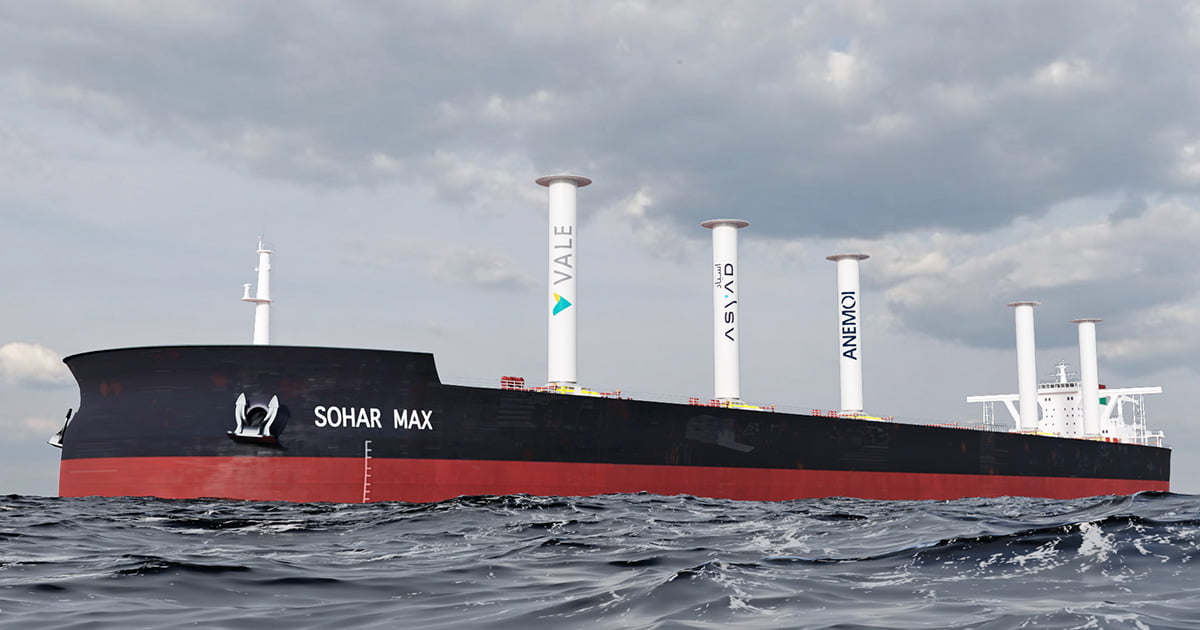This technology, developed by British manufacturer Anemoi, uses wind propulsion to provide energy efficiency gains and reduce emissions. The adaptation work on the Sohar Max ship is due to be completed in the second quarter of 2024, when trials will begin.
The five cylindrical rotors on the Valemax will be around 35 meters high and 5 meters in diameter. That is twice the windage area of the sails used on Guaibamax ships (which has a capacity of 325,000 tons), allowing efficiency gains of up to 6% and cutting CO2 equivalent emissions by up to 3,000 tons per ship per year.
The agreement to install rotor sails on the Sohar Max is the sixth and final agreement planned with Asyad to pilot innovative technologies on four ships chartered by Vale. Previous projects included the use of silicone paint to reduce resistance, the installation of frequency inverters to reduce electricity consumption and the use of hydrodynamic devices to improve propulsion. Real-time data collection systems have been installed on all the ships to monitor these technologies. These actions to incorporate cutting-edge technologies into navigation are part of the Ecoshipping program, an R&D initiative created by Vale’s shipping area to meet the company’s challenge of reducing its carbon emissions, in line with the ambitions set by the International Maritime Organization (IMO).
“Wind energy will play a central role in our strategy to decarbonize the maritime transportation of iron ore,” says Vale’s Shipping Technical Manager, Rodrigo Bermelho. “In addition, all these Ecoshipping pilot projects will produce valuable information for the next generation of Guaibamax ships.”

